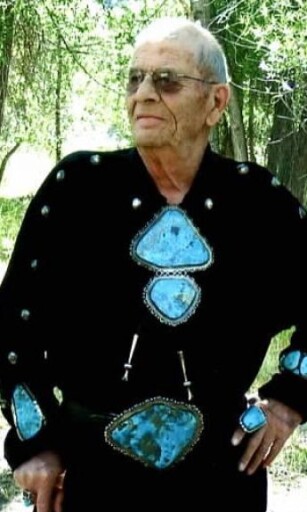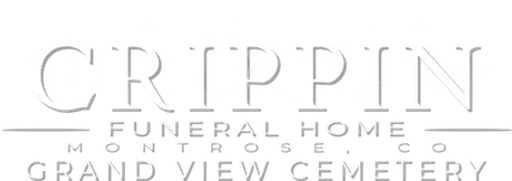

Dixie Rinehart
d. April 10, 2019
Spacesuit glove inventor dies at 80
Dixie Rinehart, one of eight people named on the patent for the Apollo spacesuit, departs body for his own heavenly travels
Inspired by symbolism, the complexity of God’s designs and the beauty in ancient cultures, Dixie Rinehart led a creative life full of personal and historical accomplishments. Rinehart died due to complications from an arterial blockage on April 10 at Hope West Hospice Care Center in Grand Junction, Colorado, during his 80th year circling the sun.
Having lived and worked on both coasts and settled in Colorado in the mid-1970s, his most historic contribution to the world was developing the spacesuit gloves for the first American space missions. He also designed gloves for space shuttle trips, the ski industry, hunting, motorcycling and the military, as well as diverse products including a pinball machine and ski boots.
He was known by all for his eccentric array of personal pursuits from clowning, acting, directing and playwriting to making traditional Native American clothing, instruments and tipis, and later restoring and traveling in his 1961 Lincoln Continental convertible as well as performing and writing tunes on the bagpipes. He was supported in all his activities by loving wife Carol (MacDonald) Rinehart as they raised three children and led a ceremonial life in the Native American Church and Northern Cheyenne traditional ways.
Rinehart believed his vocational direction was set early in life, being born in Michigan – a state shaped like a hand (or mitten). Then, his fate was further fixed when his parents, Hildegarde and Sheldon Rinehart, named him Dixie – dix being the French word for ten (as in 10 digits on two hands).
He was driven by curiosity and creative impulses throughout his childhood in the rural, wooded areas of east central Michigan, where the thumb and the pointer finger of the state met. Leading his two younger brothers – Sheldon and Hurst Rinehart – on adventures, he was fascinated by native heritage, plants, animals and science. From catapults and handmade boats to rockets that blew up his family’s basement, he taught himself engineering principals through trial and error.
In high school, he developed what would become a lifelong passion for storytelling and entertainment. Whether he was performing in a school play, writing radio shows or clowning for local events, he found joy in dreaming up and memorizing hours and hours of skits and gags.
Upon high school graduation, he joined the Air Force and was stationed at Edwards Air Force Base in the Bioastronautics Branch in the Flight Test Center in southern California. There he excelled, earning certificates for Russian language, basic medical training, military correspondence, an airman achievement award, and as an apprentice physiological training specialist with the highest student grade average. This training and work in the development of high altitude flight and equipment led to a contract assignment with North American Aviation, also in southern California, where he was involved with the Apollo Program’s crew performance simulation studies and developed and produced waste collection assemblies (fecal waste bags).
While in the Air Force, he could often be found in the desert searching for and collecting Native American artifacts, as well as on stage and behind the scenes with a small theater company. Rinehart also met his sweetheart, Carol, at an Air Force dance. They were married a few years later, immediately moving to Dover, Delaware, where he accepted a job at ILC Industries, Inc. (International Latex Corporation), a government contractor designing the spacesuit for NASA and the Apollo missions.
From 1963 to 1974, Rinehart’s main focus was collaborating on the team that developed the spacesuits worn by American astronauts on the moon. Though he had a part in most areas of the suit creation and is one of eight men named on the patent, his main contributions were to the glove design and he is recognized as the inventor of the Apollo gloves. He not only engineered the gloves’ shape, functionality and materials, but also sized each glove to each astronaut who joined the Apollo missions, worked directly with Neil Armstrong and the others including Jim Irwin who became a good friend.
As an employee without a college degree, Rinehart’s pay was less than adequate to support his family which had grown to include three children, Tina, Tanya and Scott, by 1968. So, the ever-creative father moonlighted as a clown for a community TV show and local events, as well as starting and operating a small nightclub with fellow ILC engineer Bob Robbins (who became a lifelong friend).
Dixie designed and sold canvas tipis from their Dover home, and were featured on the popular CBS television show “What’s My Line?” Meanwhile, their Native American cultural activities increased as they handcrafted everything from traditional outfits and moccasins to bows, arrows, backrests and other traditional items. They attended “hobbyist” pow wows and canoed eastern rivers on weekends.
In 1974, the family moved to Aspen, Colorado, where ILC colleague Al Gross had already taken a job with a soft goods designer for the sports and ski industries. There, Rinehart invented among other products, electronically warmed ski gloves and ski boot insoles, athletic shoes, and the Raichle Flexon ski boot that is still a popular style today.
Being in the western U.S., Rinehart was closer to his Native American friends, many who lived in the Northern and Southern Cheyenne communities in Montana and Oklahoma. He and Carol learned historic and ceremonial traditions, and were adopted as brother and sister by James and Harriet Littlebird, who instructed the Rineharts in the Cheyenne fasting ceremony on the sacred mountain of Bear Butte. Eugene Blackbear Sr. also mentored Dixie and became a brother. They also participated in Native American Church ceremonies, and the Rineharts traveled frequently to the Navajo community, where he and Carol were adopted as brother and sister by Richard and Mable Charlie.
In Aspen, Dixie started New Product Development People with Al Gross, where they came up with designs for various soft goods as well as the Orbitor pinball machine and futuristic amusement park attractions that pre-dated Epcot Center. At the same time, he was contracted independently by NASA as a consultant to develop the Space Shuttle glove systems.
In 1984, he founded Rinehart Glove to produce advanced glove products for industrial and sporting goods applications. The TOASTER mitten was one of his most successful and is one of the most sold designs on the market. The FLEXOR glove line was his most prolific, and was bought and used by companies in the ski, snowmobile, hunting, work and motorcycle markets. The FLEXOR trademark was also licensed by the U.S. military for cold weather combat gloves, and millions of pairs were produced, finally allowing Dixie to achieve financial success.
Through their work with Rinehart Glove, Dixie and Carol traveled around the U.S. and to Korea and Japan for business and cultural exploration. Trips to the Las Vegas ski show, Seoul, Jeju Island and Shikoku, Japan were particular highlights.
He purchased and restored a 1961 Lincoln Continental convertible with cherry red exterior, white cloth roof and suicide doors, as well as a black 1961 Lincoln Continental sedan similar to one he had owned back in Delaware, but had traded in for a Chevy Suburban when he moved to Aspen. This hobby led to many years of travel and parties with the Colorado Lincoln Continental Club, where he met one of his closest friends, Art Apple.
In 1993, with the children out of college and starting careers, Dixie and Carol moved to their dream property in Colona, Colorado. The 140-acre spread, with pinon and juniper trees and an incredible view of the Cimarron Mountains, is a historic Ute camping area where he enjoyed archaeological discoveries. The large, comfortable log cabin, often surrounded by elk and deer, became a retreat for family and friends and a magical place to enjoy his retirement.
In 2000, son Scott bought Dixie a chanter, a recorder-like instrument used to practice bagpipe tunes, and bagpiping became one of the final challenges that he would master. He traveled to Scotland to purchase a full set of traditional bagpipes, while he and Carol also bought full kilt outfits with the accompanying regalia. He marched in parades, performed at ceremonies, won a top medal in a competition in western Colorado, wrote dozens of original bagpipe tunes, and played the pipes wherever and whenever he was inspired, from the canyons of Utah to Yosemite National Park.
His final years included more travel, especially to Mexico, Canada, Japan and Hawaii to visit friends and learn about local cultures. Wherever he went, everyone he visited was left in awe by his energetic sharing of stories, jokes and historical knowledge
Fascinated by his genealogy, he found profound symbolism in his connection to descendants in a Scottish clan, represented by the image of a hand (the focus of his career). He was also pleased to be called Feather Man by Mayans who interpreted his name. His Cheyenne name was Vaotseva-Hista, Deer Hart, because of his gentle nature and big heart, and he was truly generous to all until the end.
Dixie Rinehart will be laid to rest next to Carol in the Colona Cemetery, Colorado at 2 p.m. on Saturday, April 20. For information, e-mail home@tanyaishikawa.com or call 970-240-1900.
Guestbook
Visits: 76
This site is protected by reCAPTCHA and the
Google Privacy Policy and Terms of Service apply.
Service map data © OpenStreetMap contributors



